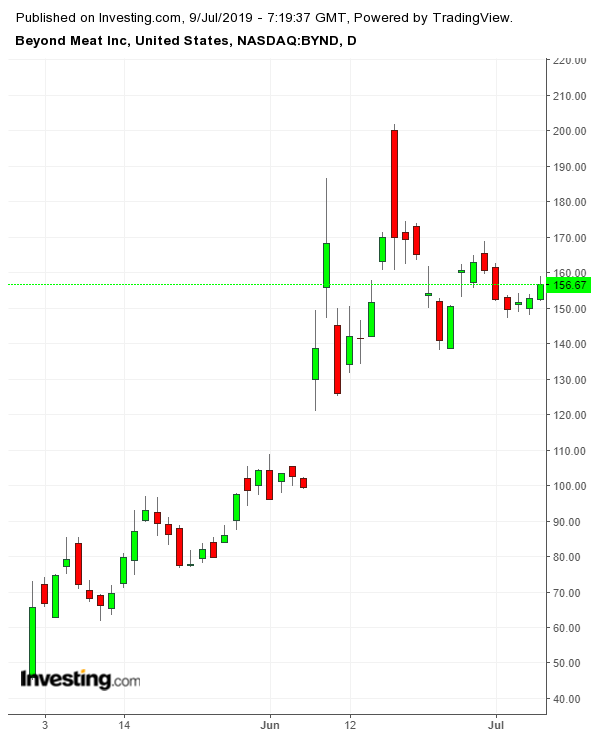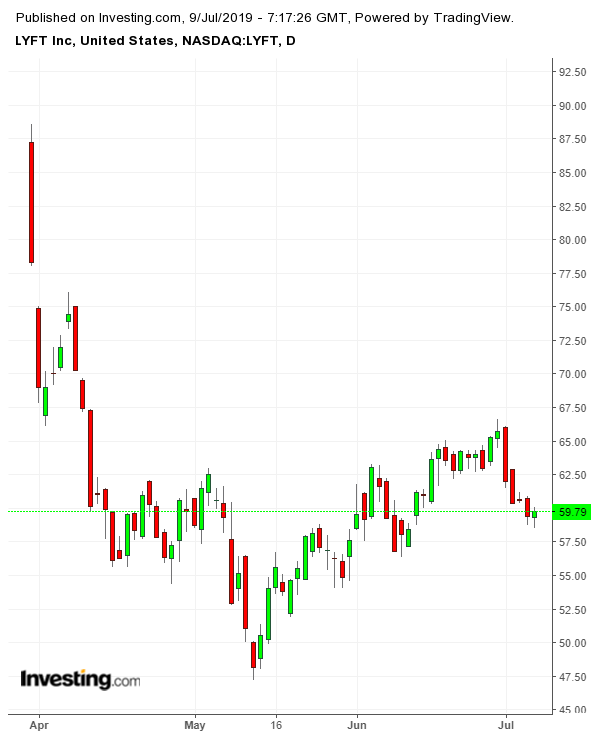The 2019 Initial Public Offering (IPO) season has been, arguably, one of the most anticipated in years. As this bull market keeps extending, many analysts are comparing the current situation to 1999, the year when tech companies public offerings peaked—just before the dotcom bubble burst.
Of course, given that U.S. markets are at all-time highs, it makes perfect sense for companies interested in raising capital via public markets to step forward at this time. Yet for all the frenzy, not every highly anticipated IPO has been a stellar performer. Of the seven high profile offerings that occurred thus far in 2019, some managed impressive returns, but many lagged or even produced negative returns.
Using standard school report card rankings, where A+ is excellent and F denotes a total fail, we've ranked seven of the most heralded offerings so far this year. In our next post, we’ll take a look the big IPOs expected during the second half of the year.
1. Beyond Meat: A+
- Performance from IPO pricing: +526%
- Performance from first trade: +240%
Beyond Meat (NASDAQ:BYND), the manufacturer of plant-based meat substitutes has been, without doubt, the hottest IPO so far this year. Trading started on May 2.
Since then the stock has experienced astonishing growth. More significantly, it's muscular surge was helped by a good narrative already in place from the company. By managing to secure high visibility partnerships with fast food chains such as privately-held Carl's Jr. and harnessing itself to cultural trend of eschewing meat, the company was able to generate excitement among investors about its prospects.
A strong growth story coupled with a powerful narrative is a guaranteed recipe for explosive share momentum. Beyond Meat now trades at almost 100 times annual revenues, so its valuation is based on long-term expectations rather than sound fundamentals.
2. Zoom Video Communications: A
- Performance from IPO pricing: +152%
- Performance from first trade: +39%
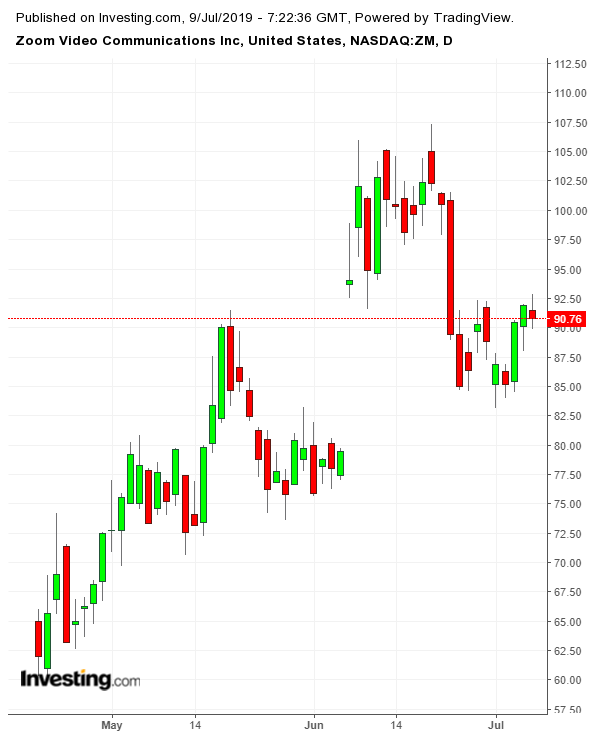
Zoom's (NASDAQ:ZM) ascension, since it went public on April 8, was so quick, it even caught its CEO off guard.
The valuation for this video conferencing tool, however, is being driven by two key factors: it more than doubled its revenue last year, and the company is already profitable. In the current climate, where many tech companies IPOs are focused on growth at the expense of immediate earnings, Zoom’s ability to deliver on both has been handsomely rewarded by investors.
3. Pinterest: B
- Performance from IPO pricing: +41%
- Performance from first trade: +13%
Our pre-IPO evaluation: Neutral
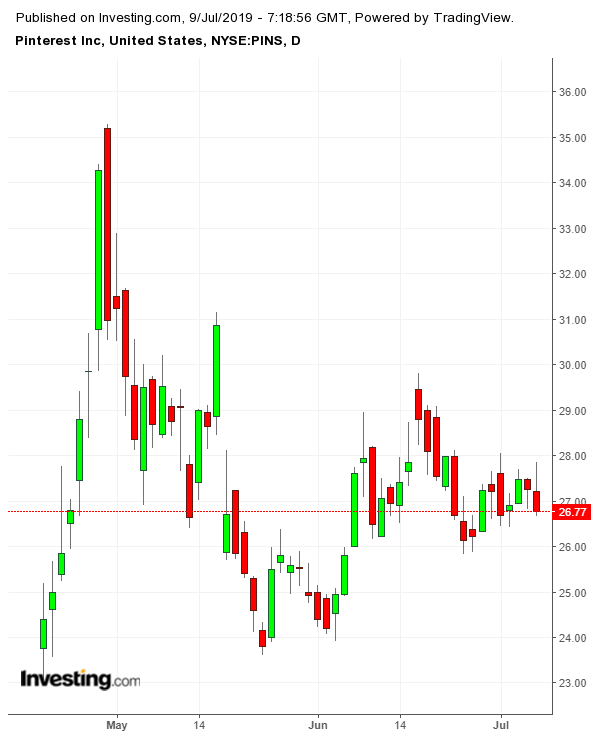
Though Pinterest (NYSE:PINS) took off after its April 18 IPO, the social media network that allows users to display posts on their personal creative boards, has since come back to earth. The early surge was predicated on investor hopes the company would soon be profitable, but its first earnings report on May 16, drove the stock to a more reasonable valuation, on doubts about when the company would actually reach profitability.
Still, it can be argued that Pinterest has been the only high-expectations IPO that actually played out well for retail investors. Though we remain neutral on Pinterest's prospects going forward, since the stock's current price reflects potential monetization, taking into account that profitability may not come until later, in 2020.
4. Levi Strauss: C
- Performance from IPO pricing: +36%
- Performance from first trade: +4%

Legendary jeans manufacturer Levi Strauss (NYSE:LEVI), which IPO'd on March 21, should actually have two grades based on when an investor was able to acquire its shares. For those who were able to access it at the IPO price it scores an A; unfortunately for the less privileged, it gets a D-.
Since most people didn't have access to the IPO price, we've averaged its ranking to a C. Levi Strauss is a solid business with growing but not explosive revenue. It has a considerable amount of debt ($1.2 billion on a TTM net income of $448M) and it faces strong competition from the sportswear industry, including competitors such as Nike (NYSE:NKE) and Adidas (OTC:ADDYY) among others.
These factors are the reason for the stock's lackluster performance so far. While LEVI is a solid business, we don't see any immediate fundamentals that would correct its course higher.
5. Slack Technologies: C-
- Performance from IPO pricing: +34%
- Performance from first trade: -9%
Our pre-IPO evaluation: Overvalued
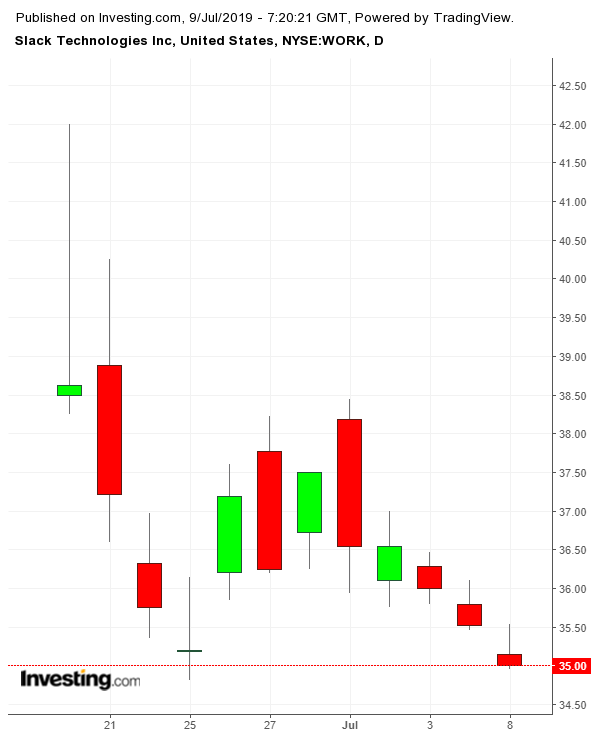
Like Levi Strauss, the return on Slack (NYSE:WORK) depends on whether one had access to the IPO price. Slack shares, which began trading on June 20, have only been available for three weeks, so there's little more to say about the company at this juncture. It's first earnings report as a publicly traded company isn't until October.
However, we do know that the corporate messaging tool trades at 30 times expected revenue for the full fiscal 2020, and that revenue growth is expected to slow from 67% in Q1 to 52% in Q2. For these metrics alone Slack looks like a risky investment.
6. Uber Technologies: D
- Performance from IPO pricing: -4%
- Performance from first trade: +2%
Our pre-IPO evaluation: Overvalued
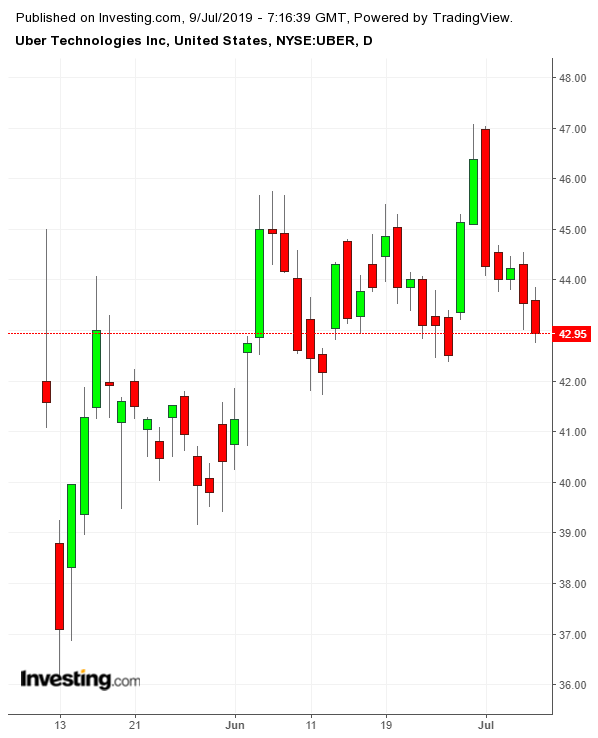
Ride hailing unicorn Uber (NYSE:UBER) was, by many accounts, the most disappointing IPO of the season so far. At one point anticipation was so high for this offering that many expected it could go public with a valuation of $120 billion dollars.
Unfortunately, the company had to lower its expectations repeatedly ahead of its IPO on May 10. It's currently trading at a disappointing market cap of ‘only’ $73 billion.
Worries about its path to profitability along with highly publicized conflicts with drivers took center stage during the first days of trading, and the stock was down as much as 20% from its IPO valuation before clawing its way back. Until Uber demonstrates it can actually make money, there’s no reason to believe investors will treat it any differently than they have thus far.
7. Lyft: F
- Performance from IPO price: -17%
- Performance from first trade: -32%
Our pre-IPO evaluation: Overvalued
Lyft (NASDAQ:LYFT) has the dubious distinction of being the only marquee IPO this year to have provided negative returns to every investor who participated in its public offering on March 29. That alone earns it an F, but it's particularly egregious now, since as the broader market had its best first-half performance in two decades.
The excitement surrounding the ride hailing company's IPO—the first big offering of the year—caused underwriters to overprice the IPO. Markets, however, weren't buying it. They still aren't. We continue to believe Lyft’s lack of revenue and riders doesn't justify its current valuation.
Conclusion
Even though equity markets continue to climb, we’d argue that calls for comparing this current environment to 1999 are incorrect. Market participants in 2019 have generally had reasonable reactions to recent offerings, while not being afraid to punish greedy underwriters as in the case of Lyft.
Still, almost all the IPOs that occurred during the first half are overpriced, but then so is the general market.

